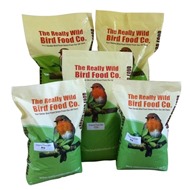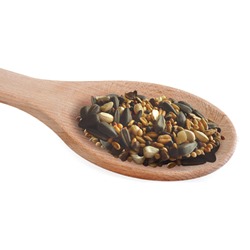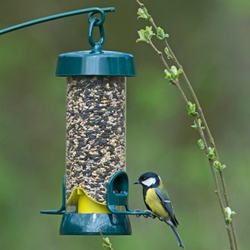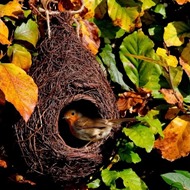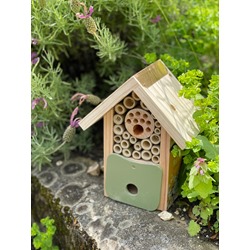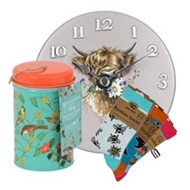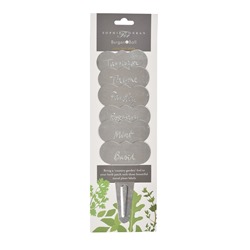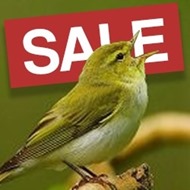
If you have ever spent time watching birds fly around in your garden, you may have wondered: do birds see colour in the same way humans do? The short answer: yes, birds can see colour, but in a very different way to how we do.
This blog will take a closer look at how birds see colour and how this affects their behaviour. Let’s dive in!
How Do Birds See Colour?
Birds have an additional cone in their eyes that allows them to perceive a wider ranger of colours than we can as humans. While we humans have three colour receptors (or cones) in our eye that allow us to see red, green and blue, birds have four colour receptors, allowing them to see ultraviolet (UV) light in addition to the three colours we can perceive.
This allows birds to see contrasts in colours and shades that are invisible to us. For example, around 15 years ago, Finnish researchers discovered that vole urine reflects UV light which kestrels flying over open fields can plainly see. As voles run through grassy fields, they use squirts of urine to mark their trails, the kestrels can then follow these trails directly to their pray.
How Does Colour Impact Bird Behaviour?
Birds’ ability to see a wide range of colours and ultraviolet light influences a range of their behaviours, from mate selection to foraging to territory defence.
Mate Selection
Many birds’ feathers reflect UV light, which can serve as a signal in mate selection. Bright colours often indicate health and genetic fitness and thus birds that are less fit or in poor condition will have a duller plumage. For example, some parrots and finches have UV patterns that are only visible to other birds and females are drawn to these bright patterns and colours as they signal good health and strength for breeding.
Territory Defence
Bright coloured plumage can be used to signal aggression and territoriality for some male birds. They can flash their bright colours to intimidate rivals and establish dominance over a particular area, warning other males to stay away.
Foraging for Food
Birds also use their ability to see UV light to identify food sources. Many insects, fruits and flowers have ultraviolet reflections that make them more visible to birds. In fact, many seeds and fruits develop a reflective waxy coating as they open, signalling to birds that they are ripe and ready to eat.
Certain bird species are also attracted to specific colours. For example, hummingbirds are drawn to red and goldfinches are attracted to yellow, which is why many goldfinch feeders are yellow – like our Goldfinch Taster Feeder!
So, if you’re looking to attract more birds to your garden, consider looking for bird seed mixes that contain sunflower seeds and safflower seeds as both of these are known to reflect UV light.
Browse Bird Seed Mixes Browse Straight Seeds
 Back
Back Bird Foods
Bird Foods
 Seed Mixes
Seed Mixes Straight Seeds
Straight Seeds Mealworms & Worms
Mealworms & Worms Chicken Feed
Chicken Feed Duck Food
Duck Food Peanuts & Peanut Butter
Peanuts & Peanut Butter Suet & Fat Balls
Suet & Fat Balls No Mess Bird Seed
No Mess Bird Seed Wheat Free Bird Seed
Wheat Free Bird Seed Sunflower Seeds
Sunflower Seeds Softbill Bird Food
Softbill Bird Food Bulk Bird Seed
Bulk Bird Seed Trial Packs
Trial Packs Pick & Mix
Pick & Mix Mini Pick & Mix
Mini Pick & Mix Birdie Basics: Budget Bird Food
Birdie Basics: Budget Bird Food Food for Small Birds
Food for Small Birds Back
Back Bird Feeders
Bird Feeders
 Seed Feeders
Seed Feeders Peanut Feeders
Peanut Feeders Peanut Butter Feeders
Peanut Butter Feeders Suet & Fat Feeders
Suet & Fat Feeders Window Feeders
Window Feeders Hanging Feeders
Hanging Feeders Feeding Stations
Feeding Stations Ground Feeders
Ground Feeders Easy Clean Feeders
Easy Clean Feeders Bird Tables
Bird Tables Seed Trays
Seed Trays Bird Baths & Drinkers
Bird Baths & Drinkers Feeder Accessories
Feeder Accessories Feeder Hygiene
Feeder Hygiene Squirrel Proof Bird Feeders
Squirrel Proof Bird Feeders For the Kids
For the Kids Niger Seed Feeders
Niger Seed Feeders Mealworm Feeders
Mealworm Feeders Bird Food Storage
Bird Food Storage Fat Ball Feeders
Fat Ball Feeders Tube Feeders
Tube Feeders



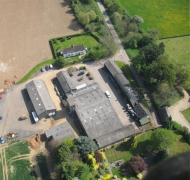 Our Farm
Our Farm
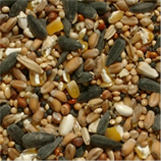 Tips & Advice
Tips & Advice
Contact Us

